|

"I did not conquer the Pacific. It let me go across."
- GERARD D'ABOVILLE
Gerard d'Aboville is a Parisian, born
in Paris
in 1945 at the end of World War
II. He is an advanced business school graduate. He
traveled around the world while working with ships in various ways. His
first major success was crossing the Atlantic with rowing boat in
1980. Gérard is the first man to row across two oceans solo: the Atlantic Ocean and the
Pacific
Ocean. He crossed the Atlantic in 1980, travelling from Cape Cod to Brittany.
He followed this adventure with a single handed crossing record, in a boat
race from Hong Kong to Manila in 1987. He was 175 centimeters tall and 46 years old
at the time.
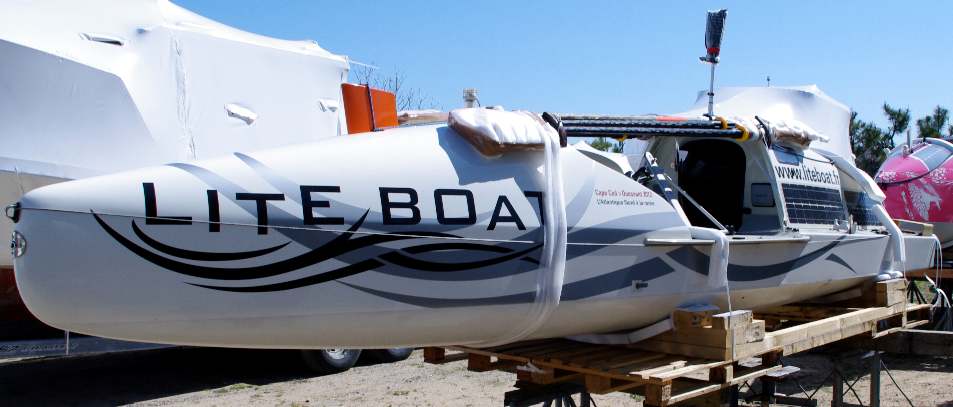
"I did not conquer the Pacific. It let me go across."
- GERARD D'ABOVILLE
SECTOR
ROWING BOAT
Gerard
departed Choshi fishery port July 11 1991, and He arrived at Ilwaco harbor in Washington state on Nov 21st in that year. It took 134 days, and approximately 10,000 kilometers to cross the Pacific. He rowed a single seat boat named SECTOR, which was the name of a Swiss clock manufacturer. He obtained an assistance of 1,000,000 franc (approximately 24,600,000 yen) from the Swiss clock manufacturer.
The SECTOR's total length was eight meters, and total width was 1.8 meters.
The empty weight was 200 kilograms. It was made of carbon fiber. The final
all up weight was approximately 650 kilograms after loading food and water for
the challenge. The boat was also equipped with a telex, a satellite navigation system
and a solar electric generator.
During his voyage he suffered injured fingers and broken ribs He arrived with a wound on his forehead but cheerful in his appearance.
On April 11th, 1992 , d'Aavobille visited Choshi City again and presented a miniature of the great boat SECTOR to mayor Sato who was promoting Choshi city as a Marine resort.
It is needless to say, he was welcomed by many Choshi citizens as a hero of the sea.
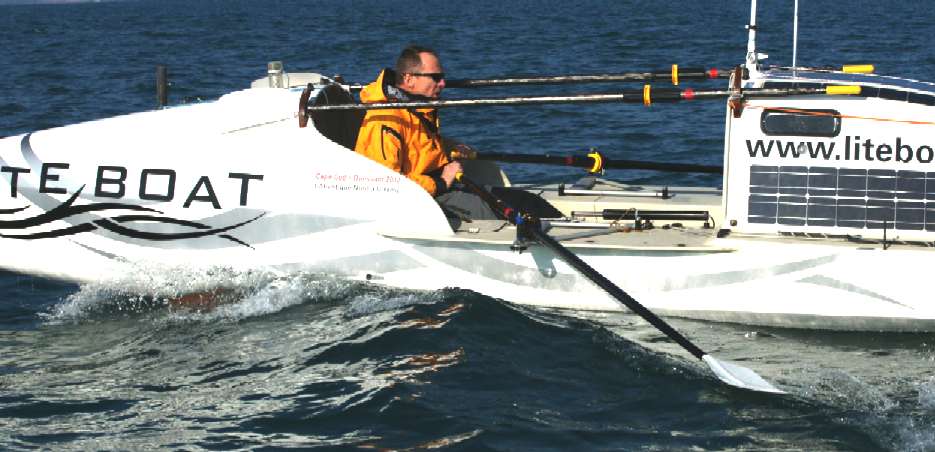
Après avoir réalisé, en 1980, la traversée de l'Atlantique à la rame (5 200 km, parcourus entre le 10 juillet et le 21 septembre, du cap Cod à Ouessant), il réussit en 1991 la traversée du Pacifique (10 500 km parcourus entre le 11 juillet et le 21 novembre de Choshi, préfecture de Chiba, à Ilwaco, État de Washington).
"When I say that I value my personal freedom above all else, I also accept the other side of that coin, namely that I take full responsibility for my actions and conduct. One hundred percent…
"This voyage across the North Pacific is, to my mind, the supreme responsibility, because in putting on the line I have risked my all…
"True responsibility, the ultimate exercise of one's freedom, is to know that in the event you fail you expose yourself to the supreme penalty, death. That in itself is enough to make me feel the full weight of what I do. All the rest is so much literature."
"I have chosen the ocean as my field of confrontation, my field of battle", writes
d'Aboville, "because the ocean is reality at its toughest, its most demanding. As my weapons against this awesome power, I have human values: intelligence, experience, and the stubborn will to win."
Gerard d'Aboville
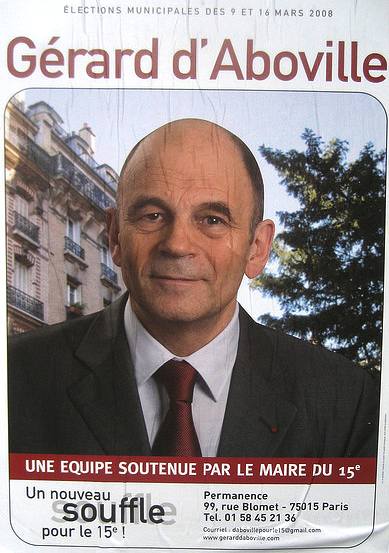
GERARD D'ABOVILLE
- Election poster
A L O N E - THE MAN WHO BRAVED THE VAST PACIFIC - AND WON
This is the incredible story of one heroic man's battle against almost impossible odds, a tale of pain and anguish, of bravery and utter solitude, a tale that ends in his victory not only over the "enemy"-the implacable ocean- but also over himself Gerard d'Aboville was forty-five years old when he set out on his improbable mission: to row across the Pacific Ocean, from west to east, from Japan to the United States. He had already rowed across the Atlantic, from Cape Cod to the port of Brest, France. But that had been ten years before, when he was in the prime of life. Still, the nagging challenge of the Pacific - twice as vast as the Atlantic and several times as dangerous -would not be denied. His rowboat, the Sector, was 26 feet long. The ocean was 6,200 miles wide. His watertight living compartment, a scant 31 inches high, contained a bunk, a one-burner stove, a ham radio, and a telex (both powered by solar panels). Fresh water came from two desalination pumps.
After months of meticulous and often frustrating preparations, d'Aboville set out from
Choshi, Japan, in mid-July, already several weeks behind schedule. He rowed ten to twelve hours a day - an average of 7,000 strokes per day - battled head-winds that pushed him backward or made him stand still (once for a frill two weeks), cyclones with 100-miles-per-hour winds, and 40-foot waves that hit him like
can-nonballs and sent him hurtling into troughs 30 feet deep. His boat capsized more than thirty times; once he was trapped inside his hermetic cabin, upside down, for almost two hours, with the
oxy-gen almost depleted, before he managed to right the boat. Finally, 134 days after his departure, he came ashore at the little fishing village of
Ilwaco, Washington. He was bruised and battered - and weighed thirty-seven pounds less - but truly un-bowed. "I have chosen the ocean as my field of confrontation, my field of battle," writes
d'Aboville, "because the ocean is reality at its toughest, its most demanding. As my weapons against this awesome power, I have human values: intelligence,
experi-ence, and the stubborn will to win."
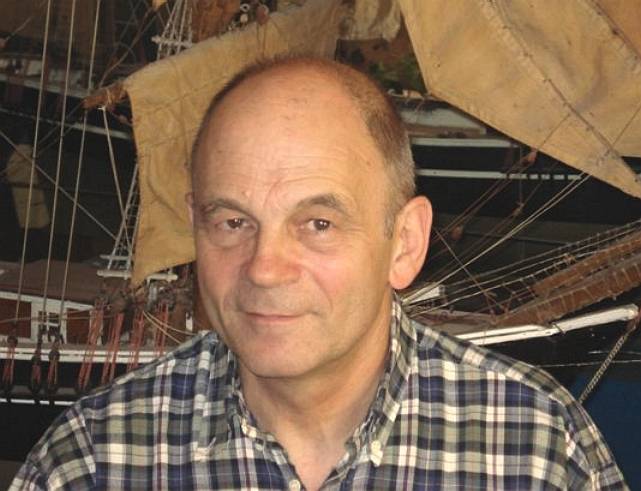
President du Conseil Superieur de la navigation de plaisance
- GERARD D'ABOVILLE
Gerard d'Aboville was born and grew up in Brittany, France, where, in his words, he had always rowed "the way other chil-dren pedaled bicycles." He lives in France with his wife, Cornélia, and their two children, Ann and Guillaume.
When my French publisher, Robert Laffont, asked me whom in the whole of France I wished to meet I said,
"D'Aboville," whose book Seul (Alone) had just appeared. The next day at a cafe in the shadow of
Saint-Sulpice, I said to d'Aboville's wife, Cornëlia, "He is my hero." She replied softly, with feeling, "Mine, too."
It is a commonplace that almost anyone can go to the moon: you pass a physical and NASA puts you in a
pro-jectile and shoots you there. It is perhaps invidious to com-pare an oarsman with an astronaut, but rowing across the Pacific Ocean alone in a small boat, as the Frenchman Gerard d'Aboville did in 1991, shows old-fashioned
brav-ery. Yet even those of us who go on journeys in eccentric circles, simpler and far less challenging than
d'Aboville's, seldom understand what propels us. Ed Gillet paddled a kayak sixty-three days from California to Maui a few years ago and cursed himself much of the way for not knowing why he was making such a reckless crossing. Astronauts have a clear, scientific motive, but adventurers tend to evade the awkward questions why.
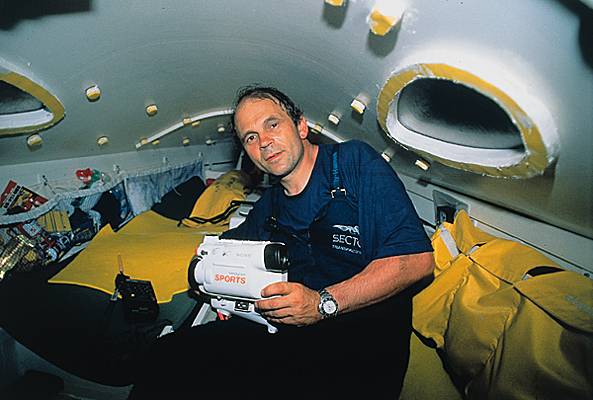
D'Aboville was forty-six when he single-handedly rowed a 26-foot boat designed especially for this unique voyage from Japan to Washington State in 1991. He had previously (in 1980) rowed across the Atlantic, also from west to east, Cape Cod to Brittany. But the Atlantic was a piece of cake compared with his Pacific crossing, one of the most difficult and dangerous in the world. For various reasons, d'Aboville set out very late in the season and was caught first by heavy weather and finally by tumultuous storms - 40-foot waves and 80-miles-per-hour winds. Many times he was terrified, yet halfway through the trip - which had no stops (no islands at all in that part of the Pacific) - when a Russian freighter offered to rescue him, "1 was not even tempted." He turned his back on the ship and rowed on. The entire crossing, averaging 7,000 strokes a day, took him 134 days. I wanted to ask him why he had taken this enormous
per-sonal risk.
D'Aboville, short and compactly built, is no more phys-ically prepossessing than another fairly obscure and just as brave long-distance navigator, the paddler Paul Caffyn of New Zealand. Over the past decade or so, Caffyn has circumnavigated Australia, Japan, Great Britain, and his own New Zealand through the low pressure systems of the Tasman Sea in his 17-foot kayak. In a memorable passage in his book, The Dark Side of the Wave, Caffyn is battling a horrible chop off the North Island and sees a fishing boat up ahead. He deliberately paddles away from the boat, fearing that someone on board will see his flimsy craft and ask him where he is going: "1 knew they would ask me why I was doing it, and I did not have an answer.
I hesitated to spring the question on d'Aboville. I asked him first about his preparations for the trip. A native of Brittany, he had always rowed, he said. "We never used outboard motors - we rowed boats the way other children pedaled bicycles." Long ocean crossings interested him, too, because he loves to design highly specialized boats.
His Pacific craft was streamlined - it had the long sea-worthy lines of a kayak and a high-tech cockpit with a roll-up canopy that could seal in the occupant in rough weather.
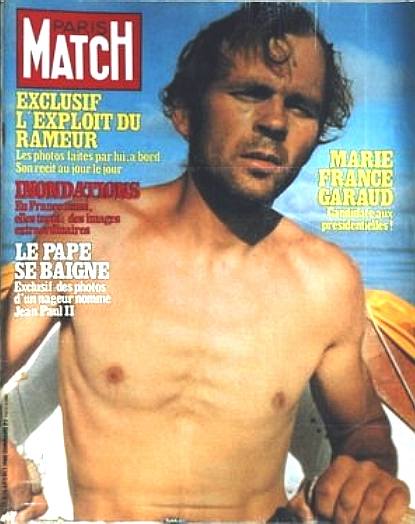
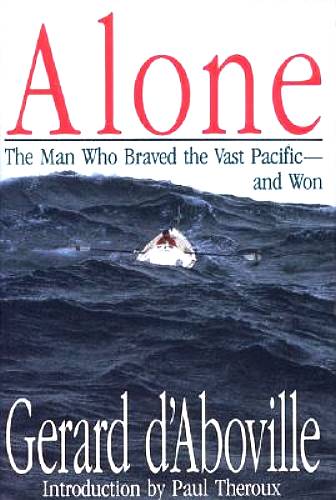
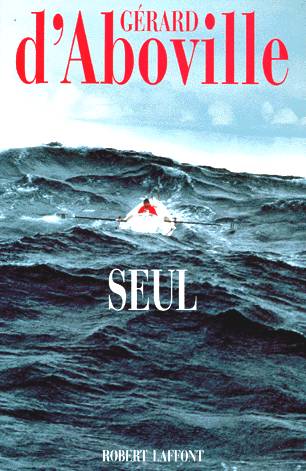
A
magazine cover and two book about his rowing exploits
A pumping system, using seawater as ballast, was designed for righting the boat in the event of a capsize. The boat had few creature comforts but all necessities: a stove, a sleeping place, roomy hatches for dehydrated meals and drinking water. D'Aboville also had a video camera and filmed himself rowing, in the middle of nowhere, humming the Alan Jackson country-and-western song ''Here in the Real World." D'Aboville sang it and hummed it for months but did not know any of the words, or indeed the title, until I recognized it on his video.
"That is a very hard question," he said, when I asked him why he had set out on this seemingly suicidal trip -one of the longest ocean crossings possible, at one of the worst times of the year. He denied that he had any death wish. "And it is not like going over a waterfall in a barrel." He had prepared himself well. His boat was well found. He is an excellent navigator. "Yes, I think I have courage," he said when I asked him point-blank whether he felt he was brave.
It was the equivalent, he said, of scaling the north face of a mountain, typically the most difficult ascent. But this lonely four-and-a-half-month ordeal almost ended in his death by drowning, when a severe storm lashed the Oregon-Washington coast as d'Aboville approached it, upside down, in a furious sea. The video of his last few days at sea, taken by a Coast Guard vessel, is so frightening that d'Aboville wiped tears from his eyes watching it with me. "At this time last year I was in the middle of it." He quietly ignored my questions about the 40-foot waves. Clearly upset at the memory, he said, "I do not like to talk about it."
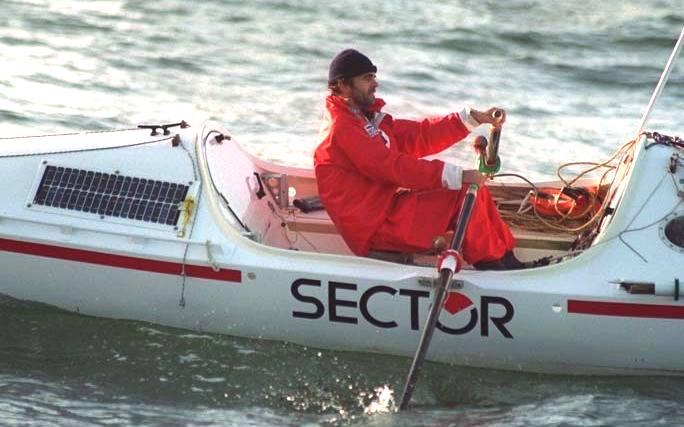
The
master mariner powering his craft against all odds
"Only an animal does useful things," he said at last, after a long silence. "An animal gets food, finds a place to sleep, tries to keep comfortable. But I wanted to do something that was not useful -not like an animal at all, Something only a human being would do."
The art of it, he was saying - such an effort was as much esthetic as athletic. And that the greatest travel always contains within it the seeds of a spiritual quest, or else what's the point? The English explorer Apsley Cherry
-Garrard would have agreed with this. He went to Antarctica with Scott in the ship Terra Nova and made a six-week crossing of a stretch of Antarctica in 1912, on foot, in the winter, when that polar region is dark all day and night, with a whipping wind and temperature of 80 below.
"Polar exploration is at once the cleanest and most iso-lated way of having a bad time which has been devised" are the first words of his narrative. On this trek, which gave him the title for his book, The Worst Journey in the World, he wrote: "Why do some human beings desire with such urgency to do such things: regardless of the
conse-quences, voluntarily, conscripted by no one but them-selves? No one knows. There is a strong urge to conquer the dreadful forces of nature, and perhaps to get conscious-ness of ourselves, of life, and of the shadowy workings of our human minds. Physical capacity is the only limit. I have tried to tell how, and when, and where. But why? That is a mystery."
But there is no conquering, d'Aboville says. Je n 'ai pas vaincu le
Pacifique, ii m'a laissë passer. "I did not conquer the Pacific," he said afterward. "It let me go across."
Gérard d'Aboville (né le 5 septembre 1945 à Paris) est un navigateur et homme politique français. Il est l'initiateur des traversées océaniques à la rame en solitaire. D'Aboville siège au conseil de Paris dans le groupe UMP. Il est aussi le président de la Fondation du patrimoine maritime et fluvial. Gérard d'Aboville vient d'achever sa traversée du Pacifique à la force des bras, jusqu'à Ilwaco, petit port de l'Etat de Washington. Le 11 juillet, il était parti de Goshi, au Japon.
A bord de son embarcation le Sector, conçue comme étant insubmersible et légère (600 kg à pleine charge), le navigateur français a apporté avec lui un désalinisateur d'eau, actionné par le mouvement à coulisses de son siège.
S'imposant un rythme quotidien très soutenu, en se levant à l'aube et ramant de 10 à 12 heures par jour, le galérien a chaviré une trentaine de fois durant sa traversée.
Il a fêté ses 46 ans en plein Pacifique, le 4 septembre dernier.
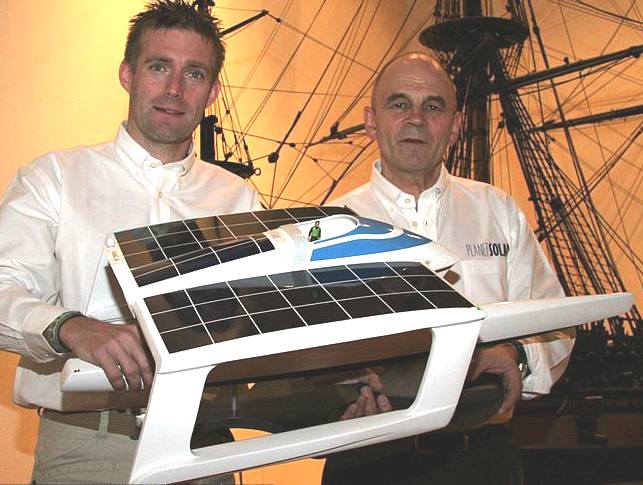
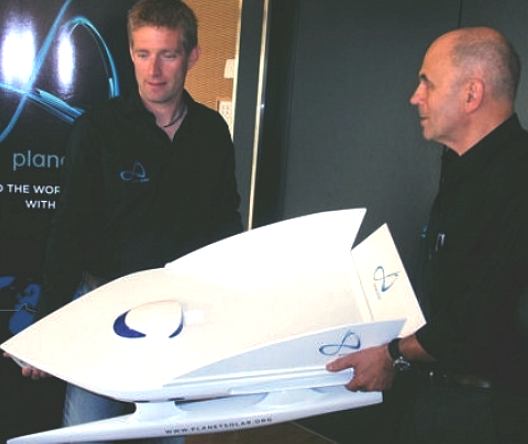
Raphael
Domjan and Gerard d'Aboville with the original trimaran and later catamaran
models of PlanetSolar
BIOGRAPHIE
Gérard d'Aboville est un descendant direct du général d'empire Augustin Gabriel d'Aboville, et d'Auguste Ernest d'Aboville, son fils, homme politique du Second Empire et des débuts de la Troisième République. Il est l'un des neuf enfants de Henri d'Aboville (1911-2002) et de Christiane de Clercq.
En 1980, parti de Cap Cod aux États-Unis le 10 juillet, il arrive à Brest le 21 septembre, 71 jours et 23 heures plus tard, après avoir parcouru 5 200 kilomètres à la rame. Son bateau, le Capitaine Cook, mesure 5,60 mètres. Il est le premier navigateur à traverser l'océan Atlantique en solitaire à la rame dans le sens ouest-est1.
En 1980, il participe au rallye Paris-Dakar en moto avec ses quatre frères, chacun sur Kawasaki KL 250.
En 1985, il est l'organisateur et le concepteur des rafts de l'expédition Africa-Raft de Philippe de Dieuleveult[réf. nécessaire].
En 1991, il traverse l'océan Pacifique à la rame. Il part de Chōshi, au Japon, le 10 juillet et atteint les côtes américaines le 21 novembre. L'année suivante le chanteur Guy Béart lui rend hommage dans une chanson intitulée Entre-temps ramait d'Aboville.
En 1993, il publie Seul, un roman qui retrace jour après jour, tel un journal de bord, son voyage en solitaire de 1991.
Il est député européen de 1994 à 19992.
Depuis, il s'est investi dans la lutte écologique et la sauvegarde du patrimoine marin avec la Fondation du patrimoine maritime et fluvial dont il est le président depuis 19973. Il est Président du Conseil supérieur de la navigation de plaisance et des sports nautiques4.
En 2001, Gérard d'Aboville accompagné de Hubert de Chevigny et Bernard Lafferrière survole le pôle nord avec un petit avion monomoteur (un Private Explorer) sans l'aide d'instruments de navigation électroniques, simplement en pilotage à vue comme lors du premier survol du Pôle.
En 2002, il se présente sans succès aux élections législatives dans la deuxième circonscription du Morbihan. En 2004, il est nommé au Conseil économique et social5.
En 2006, il intègre le projet PlanetSolar comme coskipper. Ce projet a pour but d'accomplir le premier tour du monde à l'énergie solaire au printemps 2011.
En janvier 2008, il se déclare candidat pour le poste de maire du 15e arrondissement de Paris contre le candidat UMP Philippe Goujon. Il reçoit le soutien du maire sortant, René Galy-Dejean, dissident UMP battu aux législatives 2007[réf. nécessaire].
Le 9 mars 2008 Gérard d'Aboville obtient 10,11 % des suffrages, permettant un maintien au second tour. Il fusionne avec la liste menée par Philippe Goujon, malgré l'opposition de certains membres de sa liste. Le 16 mars, d'Aboville est élu au conseil municipal du XVe arrondissement en 5e position sur la liste de Philippe Goujon6 et au Conseil de Paris7.
Il soutient la candidature de François Fillon à la présidence de l'UMP lors du congrès d'automne
2012.
BIOGRAPHY
Before1980 :Ship deliveries, sailing consultant for TV productions, ships brokerage (yachts and fishing boats)
1980: Crossing of the Atlantic in a rowing boat
1991 : Crossing of the Pacific in a rowing boat
From 1992 to 2014 : Chairman of the Supreme Council of Yachting
From 1994 to 1999: Member of the European Parliament (Fishing Commission)
From 2009 to 2014 : Member of Paris Council
Since 1996 : Chairman of the Foundation for Sea and Rivers Heritage (Fondation du Patrimoine Maritime et Fluvial)
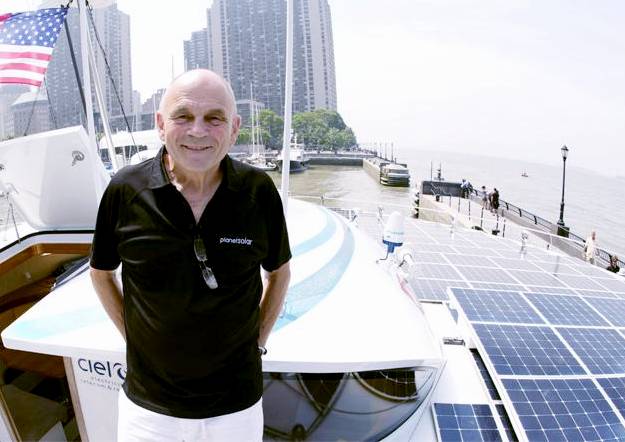
Gerard
pictured as the captain of PlanetSolar during the Deepwater Gulf Stream
expedition
DISTINCTIONS
* Prix André de Saint-Sauveur de l'Académie des sports en 1980 pour sa traversée de l'océan Atlantique.
* Grand Prix de l’Académie des Sports – Prix Serge Kampf de l'Académie des sports en 1991 pour sa traversée de l'océan Pacifique.
LINKS
& REFERENCE http://www.oceanrowing.com/Gerard_d_Aboville/ http://fr.wikipedia.org/wiki/G%C3%A9rard_d%27Aboville http://www.betterworldbooks.com/alone-id-1559702184.aspx http://www.henaff.com/fr/les-amoureux-du-pate-henaff/les-pipoles/les-pipoles-henaff/61-gerard-d-aboville http://www.decitre.fr/livres/seul-9782221074220.html http://www.cc4pacific.com/projet/inspirations/ http://www.larousse.fr/encyclopedie/personnage/Aboville/103823 http://www.live2times.com/1991-exploit-gerard-d-aboville-traverse-le-pacifique-a-la-rame-e--10383/
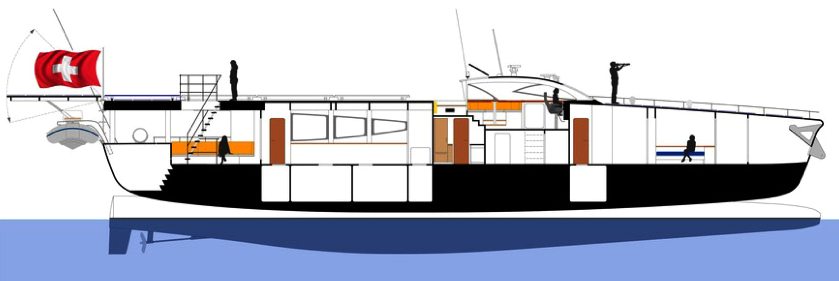
Design
concept -
Raphael
Domjan -
PROMOTIONAL
TOUR 2012
English - Swiss - French - History - Links - Homecoming
|











